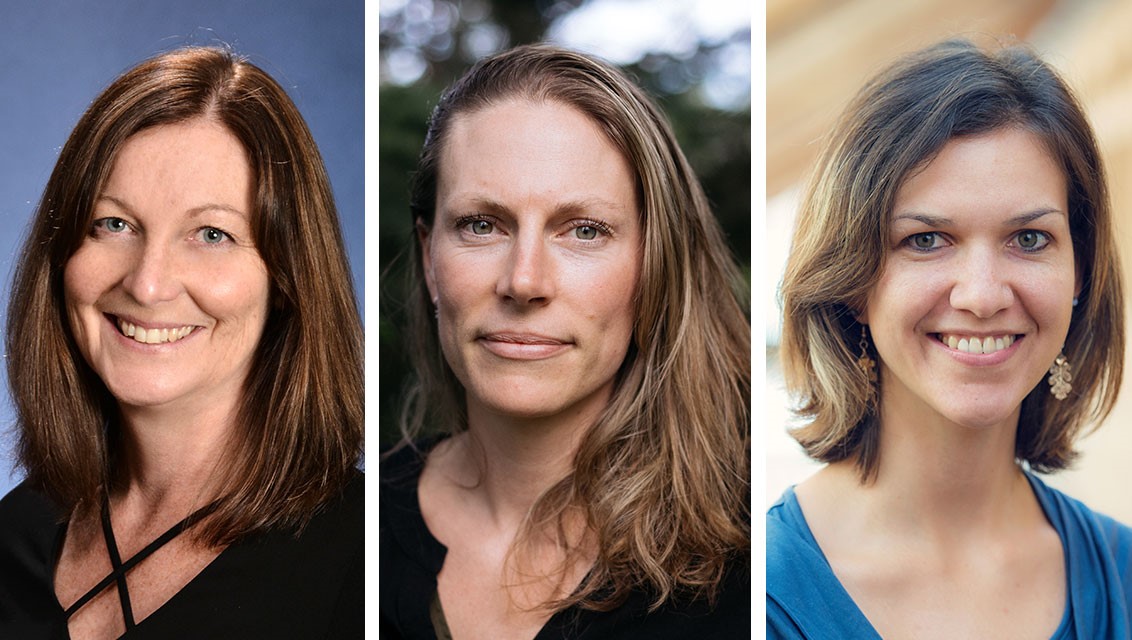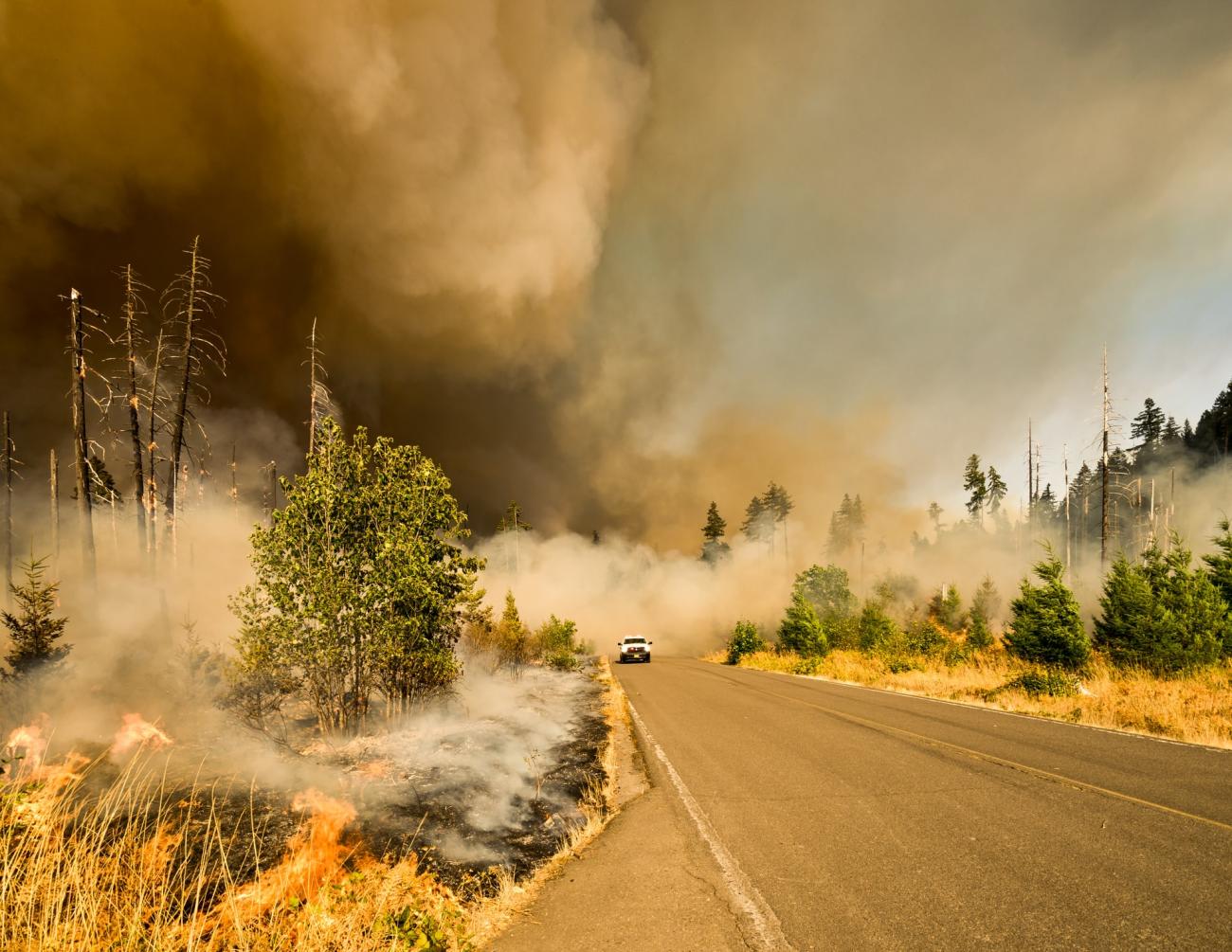UBC experts call for proactive approach to extreme wildfires
Wildfires have grown in frequency, intensity, and overall burned area due to climate change. This year, communities in BC and Canada are bracing for this pattern to continue.
UBC forestry researchers Dr. Lori Daniels (MSc’94), Dr. Kelsey Copes-Gerbitz (PhD’22), and Dr. Kira Hoffman are wildfire experts whose research focuses on how natural disturbances such as wildfires and droughts, human factors, and climate interact to affect how easily — or not — forests burn.
In this Q&A, they address how families and communities can prepare for more extreme wildfire seasons.
What does it mean for communities to co-exist with wildfire?
Dr. Lori Daniels (LD): Our decades of research show us climate change and the impact it has on fire-prone landscapes will only escalate in the years to come. We are living in a new era of wildfires, and so we must think about how to co-exist with fire. This means changing our ways of thinking and recognizing that we should approach wildfire management the same way we approach preparing for other natural disasters like earthquakes or floods — we don’t try to fight them; we proactively plan for the eventuality. We should design sustainable and integrated risk management and land-use planning strategies that could include:
- Developing more preventative forest management plans that reduce the risk of high-intensity wildfire, such as through commercial thinning of young timber plantations to ensure regenerating forests are resilient to future drought.
- Dramatically increasing the area of proactive fuel treatments around communities and diversifying the broader landscapes.
- Updating building codes to match local hazard levels or supporting retrofits to existing fire-prone neighbourhoods.
Your research, as a group and individually, has studied the importance of Indigenous fire stewardship in promoting the health of forests and human communities. In B.C. and Canada, are we making progress in prioritizing Indigenous land stewardship?
LD: We are certainly headed in the right direction, but we still have much more to do in this area. For example, the 2021 Indigenous-led report on the 2017 Elephant Hill megafire produced by the Secwepemcúl’ecw Restoration and Stewardship Society and UBC faculty of forestry notes that the devastating fire, which burned more than 190,000 hectares, could have been better managed if provincial agencies had engaged the affected Indigenous communities more actively and earlier in the process.
As emphasized in the report, we need to consistently and meaningfully support Indigenous-led land stewardship at all levels. This includes reintroducing cultural burns to establishing a national Indigenous fire stewardship group in Canada.
In fact, Indigenous leadership is an essential component of the recommended integrated and sustainable risk-management approach towards wildfires.

You have also worked to understand the needs and priorities of communities that are developing their own strategies to minimize the threat of catastrophic wildfires. What insights did you gain from this work?
Dr. Kelsey Copes-Gerbitz (KCG): Many communities across the province are aware of the risk, especially after the three most widespread (based on area burned) fire seasons on record occurred over the last five years. To help communities develop ecologically and culturally appropriate solutions to addressing this risk, our research looks into how important fire was historically. Using tree-rings and in collaboration with Indigenous communities, our research is showing that the disruption of Indigenous stewardship, policies of fire suppression, and climate change is changing the forests so they are more likely to burn at uncharacteristically high severities today.
Moving into the future, it is clear that there is no one-size-fits-all solution to addressing fire risk. We need Indigenous-led strategies, changes to policy to prioritize proactive risk reduction at landscape scales, the reintroduction of prescribed and cultural burning, FireSmart infrastructure, and more investment from the government to make these solutions a reality.
In addition to the work that needs to be done by governments and policymakers to manage fires better, how can people be more prepared within their homes and communities?
Dr. Kira Hoffman (KH): Everyone needs to do their part within their communities to be fire smart. Whether you are living on the West Coast or in some of B.C.’s hottest and driest regions, you need to think about how to stay safe in the event of a wildfire.
Much of B.C. is fire-prone, but citizens can take preventative measures to safeguard their families, homes, and communities. Evaluate your living space and think about each part of your home. Is your roofing fire-resistant? Are your gutters free of debris? Are your home vents screened? Preparing a go-bag with essential emergency equipment, food, water, and blankets is helpful for evacuating on short notice. Familiarize yourself with your evacuation routes and talk to your families and friends about evacuation plans.
KCG: There are fantastic resources out there offering a wide range of easy-to-remember tips and directions to help with keeping you and your family safe. Some of the best ones include BC’s FireSmart manual, FireSmart Canada’s Blazing the Trail: Celebrating Indigenous Fire Stewardship, BC’s wildfire preparedness guide, and BCCDC information on reducing smoke exposure.

































